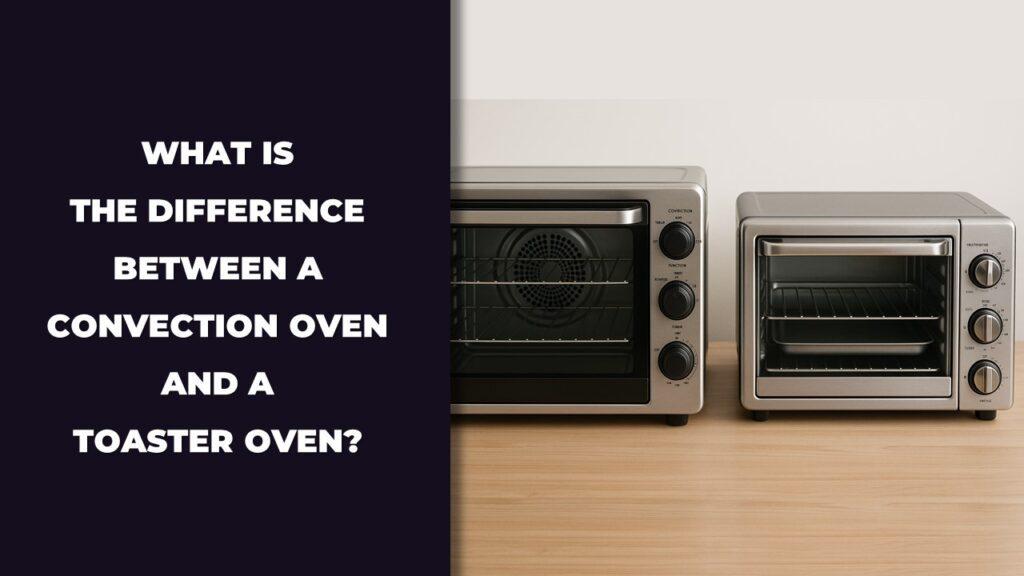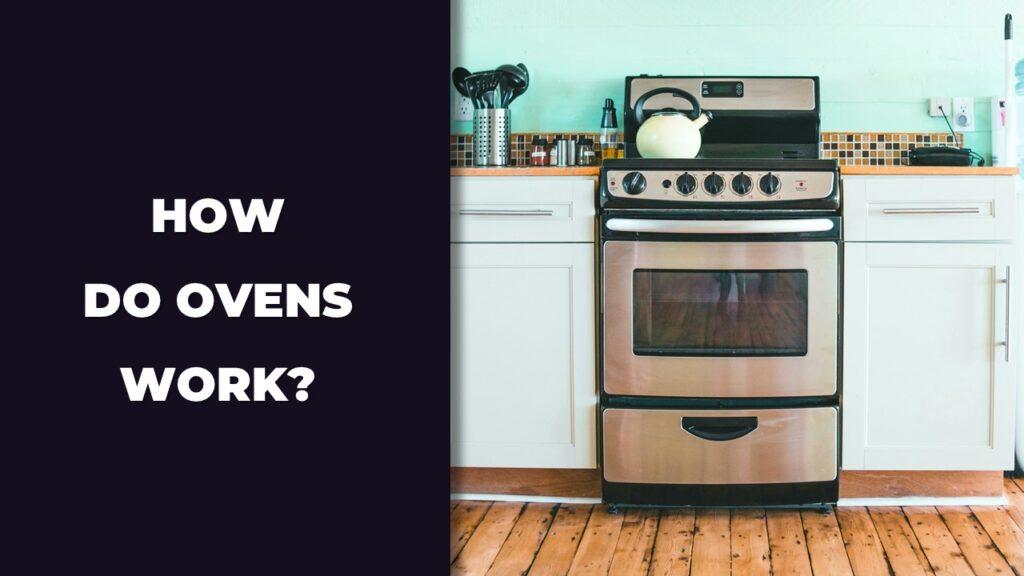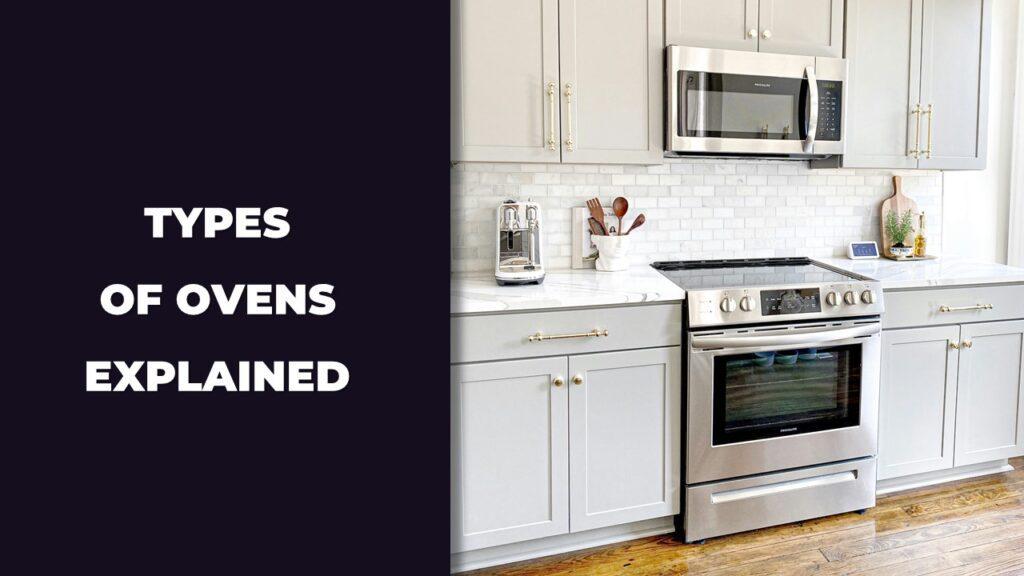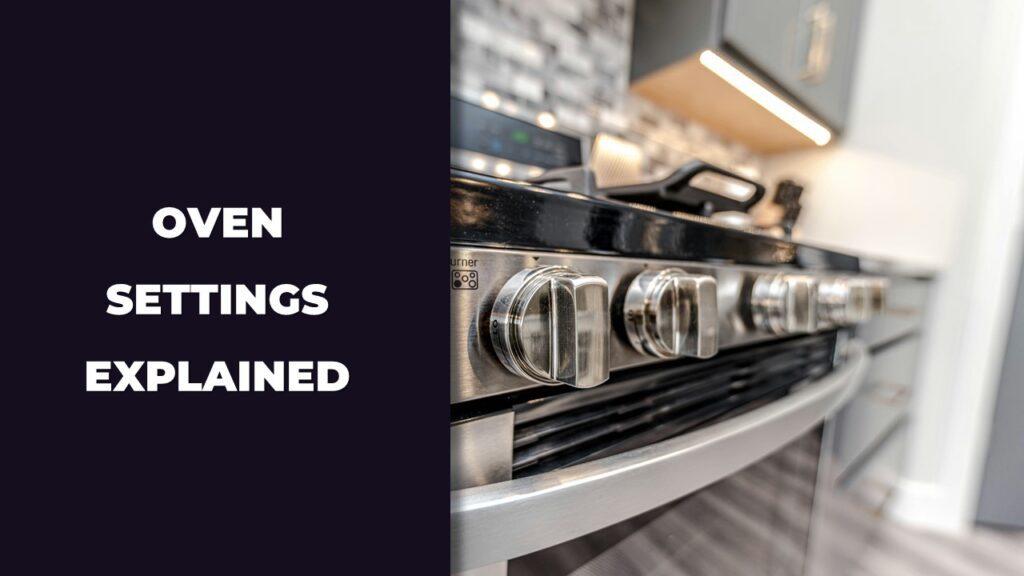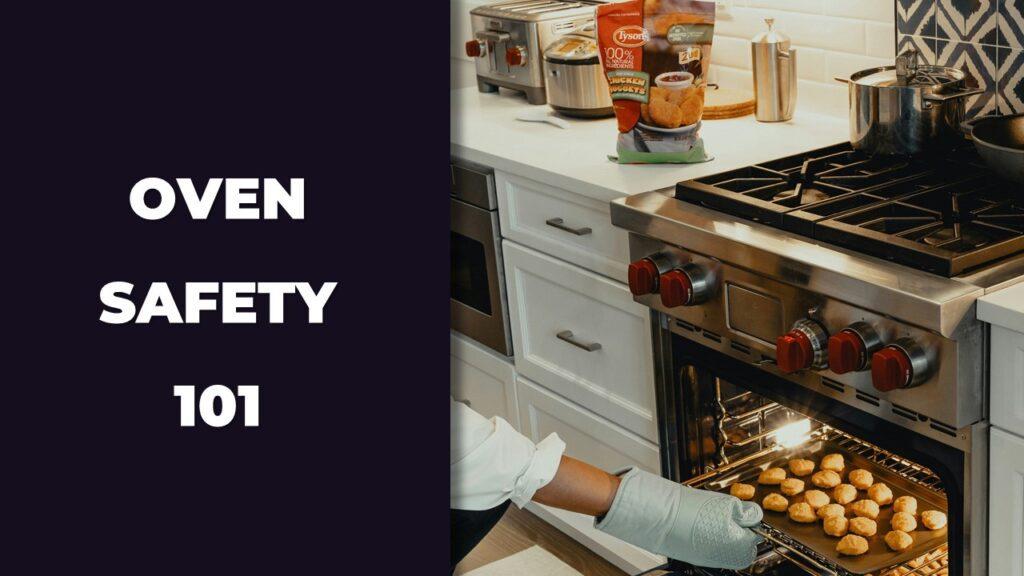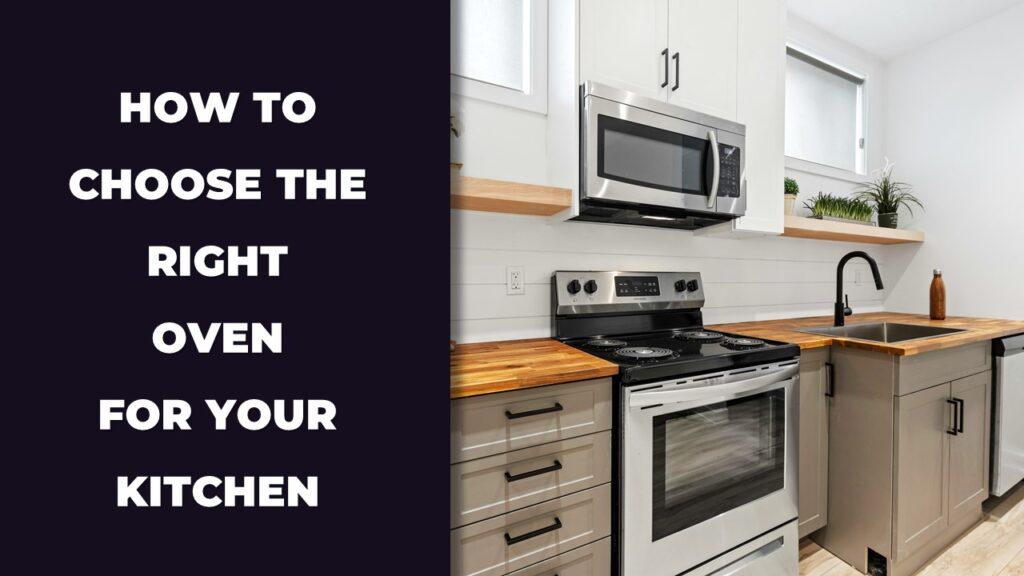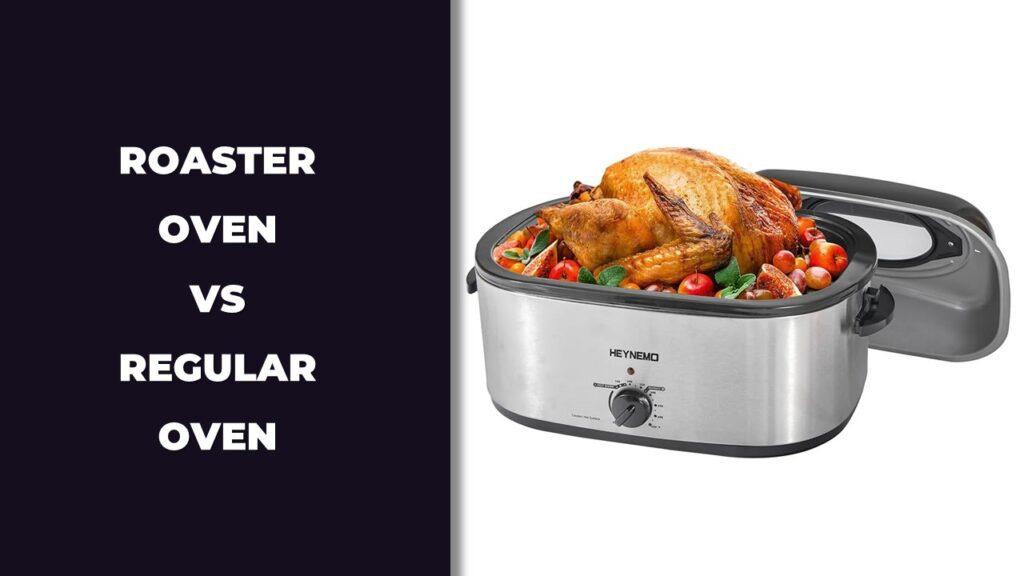
A roaster oven is a compact countertop appliance made for roasting, slow-cooking, and baking. It uses moist heat and a domed lid to lock in flavor and tenderness, especially for large meats like turkey or ham. A regular oven, on the other hand, is built into your kitchen, uses dry heat, and works well for a wider range of dishes, from cookies and casseroles to roasts and broils.
In this article, we’ll compare how these two ovens work, what makes them different, and which one fits your cooking style best. Whether you’re feeding a crowd or baking dinner rolls, we’ve got you covered with the pros, cons, and real-world tips.
What Is a Roaster Oven?
A roaster oven is a small electric countertop oven designed for roasting meat, slow cooking, and baking. It has a removable pan and a domed lid that traps moisture, helping food cook evenly and stay tender. It works well for large meals like turkey, ham, and casseroles, especially when your main oven is full or unavailable.
Here’s how a roaster oven works and what it includes:
- Moist Heat Cooking: Uses enclosed steam and radiant heat to keep food juicy and tender.
- Domed Lid: Helps trap heat and moisture inside the unit, no constant basting needed.
- Removable Inner Pan: Makes cleanup quick and allows for easy lifting of large meats or dishes.
- Portable and Compact: Sits on your countertop, easy to store when not in use, perfect for small kitchens or RVs.
- Energy Efficient: Uses less electricity than a full-size oven and preheats faster.
- Versatile Use: Great for slow-cooked stews, baked potatoes, desserts, and holiday meats.
It’s like having an extra oven that doesn’t take up your kitchen.
What Is a Regular Oven?
A regular oven is a built-in or freestanding kitchen appliance that uses dry heat to cook food. It’s typically larger, stays in place, and can bake, roast, broil, and sometimes use convection fans to circulate hot air. It’s the main appliance most people use for everyday meals and baking.
Here’s what makes a regular oven a kitchen staple:
- Dry Heat Cooking: Heats food with electric or gas elements at the top and bottom of the oven cavity.
- Versatile Functions: You can bake cookies, roast vegetables, broil steaks, or use convection to shorten cook times.
- Multiple Rack Levels: Lets you cook more than one dish at once, useful for family meals or holidays.
- Built-in Design: Often part of a range or wall setup, not portable but integrates with your kitchen layout.
- Convection Option: Some models have a fan to move hot air around, cooking food faster and more evenly.
- Wider Capacity: Ideal for big baking trays, multiple dishes, or items that need space like cakes or bread.
It’s the everyday workhorse for everything from pizza night to baking a cake.
Key Differences Between Roaster Oven and Regular Oven
A roaster oven is smaller, portable, and uses moist heat to cook food, while a regular oven is larger, built-in, and relies on dry heat. Roaster ovens are better for cooking meats with retained moisture and lower energy use. Regular ovens, on the other hand, are more versatile, can cook multiple dishes at once, and are ideal for daily cooking and baking.
Here’s a closer look at how they differ:
Quick Comparison Table
Here’s a side-by-side look at how roaster ovens and regular ovens compare:
| Feature | Roaster Oven | Regular Oven |
| Size | Compact, countertop-friendly | Large, built-in or freestanding |
| Portability | Easy to move and store | Fixed in place, not portable |
| Cooking Method | Moist heat with domed lid | Dry heat, often with top and bottom elements |
| Preheat Time | Quick preheat | Slower preheat |
| Moisture Retention | High–trap steam for juicy results | Lower – may require basting or covering |
| Energy Use | More efficient for small batches or meats | Higher usage, especially for longer cooks |
| Versatility | Best for meats, casseroles, and slow-cooking | Great for baking, roasting, and broiling |
| Cleaning | Easy–removable insert | More effort – may need deep cleaning |
Size and Portability
Roaster ovens are compact and can sit right on your countertop. You can move them, store them, or even take them to another location like an RV or holiday home.
Regular ovens are built-in or freestanding appliances that stay fixed in your kitchen. They take up more space but also offer more cooking room inside.
Moisture and Cooking Style
Roaster ovens hold in moisture thanks to their domed lids and enclosed design. This is perfect for meats that need to stay juicy, like turkey or brisket.
Regular ovens use dry heat and need more attention to avoid drying food out. You may have to baste or cover dishes to keep them from losing moisture during long cooking times.
Cooking Speed and Energy Use
Roaster ovens heat up faster and use less electricity overall. Because of their smaller space and sealed environment, they can cook large meats faster than a regular oven.
Regular ovens take longer to preheat and typically use more energy, especially if you’re baking multiple items one after another.
Cooking Versatility
Regular ovens offer more flexibility. You can bake cakes, roast vegetables, broil steaks, and use different oven settings all in one appliance.
Roaster ovens are more limited. They’re great for large meats and slow-cooked meals, but not as ideal for delicate baking like cookies or puff pastries.
Cleaning and Maintenance
Roaster ovens are easier to clean. You remove the insert pan and give it a wash—done. Regular ovens may have self-cleaning modes, but still require more effort, especially if food drips or burns onto the surfaces inside.
Each has its strengths. Choosing one depends on what you cook most often, how much space you have, and whether you need the flexibility of one or the efficiency of the other.
When Should You Use a Roaster Oven Instead of a Regular Oven?
Use a roaster oven when you’re cooking a large piece of meat, want to save oven space, or need a portable option that cooks fast and keeps food moist. It’s especially handy during holidays, meal prep days, or when your main oven is already busy.
Here are some perfect situations for using a roaster oven:
- Holiday Cooking: When the regular oven is full of side dishes, the roaster can handle the turkey or beef.
- Large Meats: Great for cooking beef brisket, whole chickens, anything that benefits from slow, moist heat.
- Small Kitchens or Dorms: If you don’t have a built-in oven, the roaster gives you a solid backup for basic meals.
- RV or Off-Grid Use: Portable and compact, it’s easy to pack and run in mobile living spaces.
- Meal Prep: Cook big batches of casseroles or stew without heating up the whole kitchen.
- Hot Weather: Roaster ovens generate less heat, keeping your kitchen cooler in the summer.
If you value juicy results, quick cleanup, and extra cooking space, this little appliance can be a real game-changer.
Pros and Cons Comparison Table: Roaster Oven Vs Regular Oven
Roaster ovens are great for moisture-rich cooking, saving space, and using less energy, while regular ovens shine when it comes to cooking variety, size, and multitasking. This table highlights the main trade-offs:
| Feature | Roaster Oven | Regular Oven |
| Size & Portability | Compact, portable | Large, fixed installation |
| Cooking Method | Moist, enclosed steam heat | Dry heat, convection optional |
| Cooking Speed | Faster for large roasts | Slower, especially during preheat |
| Moisture Retention | High – keeps meats juicy | Lower – may require basting |
| Energy Use | Low energy consumption | Higher energy usage |
| Cleaning | Easy with removable insert | More effort required |
| Versatility | Limited (mainly meats & casseroles) | High (baking, broiling, roasting) |
This side-by-side view helps you quickly weigh your needs and decide which oven works better for your meals and kitchen space.
Expert Tips For Using A Roaster Oven
A roaster oven works best when you preheat it, avoid opening the lid too often, and use the rack to keep food elevated for even cooking. These small changes can make a big difference in how your food turns out—juicier, more flavorful, and cooked just right.
Here are some practical tips to get the most out of your roaster oven:
- Always Preheat First: Just like a regular oven, a roaster oven needs a few minutes to reach cooking temperature before you add the food.
- Use the Rack: Lifting the meat or dish off the bottom lets heat flow all around, helping it cook evenly.
- Don’t Keep Peeking: Opening the lid lets out steam and heat. Trust the timer and check only when needed.
- Keep It Clean: Let it cool before washing. The removable insert makes cleanup easy—just soak and rinse.
- Know Your Temps: Use an oven thermometer if your model doesn’t have an accurate digital display. Some roasters run hotter or cooler than expected.
- Add a Liner for Wet Dishes: Slow-cooked meals like chili or stew can bubble up—lining the insert with foil or a disposable liner helps avoid mess.
These tips keep your roaster oven running smoothly and your meals tasting better with less effort.
Final Thoughts
If you need something compact that keeps meat juicy and saves energy, a roaster oven is a smart choice. It’s ideal for holiday meals, slow-cooked recipes, or when your main oven is already full. Plus, it’s easy to clean and store away when you’re done.
On the other hand, a regular oven gives you the cooking range most homes need every day. It bakes, broils, and roasts a wider variety of meals, and it’s great for multitasking when you’re preparing several dishes at once.
The right pick really comes down to how and what you cook. If you’re always roasting big cuts of meat or want an extra oven during busy times, a roaster oven can be a lifesaver. But if you bake cookies one day, a casserole the next, and dinner rolls on Sunday, a regular oven gives you the flexibility you need.
Related FAQs
Can A Roaster Oven Replace A Regular Oven?
Yes, it can handle most roasting, baking, and slow-cooking needs. But it’s not ideal for broiling or cooking multiple dishes at once like a regular oven can.
Does Food Taste Different In A Roaster Oven?
It usually does. Food comes out more moist and tender because the closed lid traps steam and prevents drying out.
Can I Bake A Cake In A Roaster Oven?
Yes, you can. Just make sure the cake pan fits inside and check doneness carefully since heating can vary by model.
Is A Roaster Oven Energy-Efficient?
Very much so. It uses less electricity and heats up quicker than a full-size oven, especially for single dishes or meats.
Are Roaster Ovens Worth It?
If you cook for crowds, prep big meals, or need an extra oven during holidays, they’re a solid and practical investment.
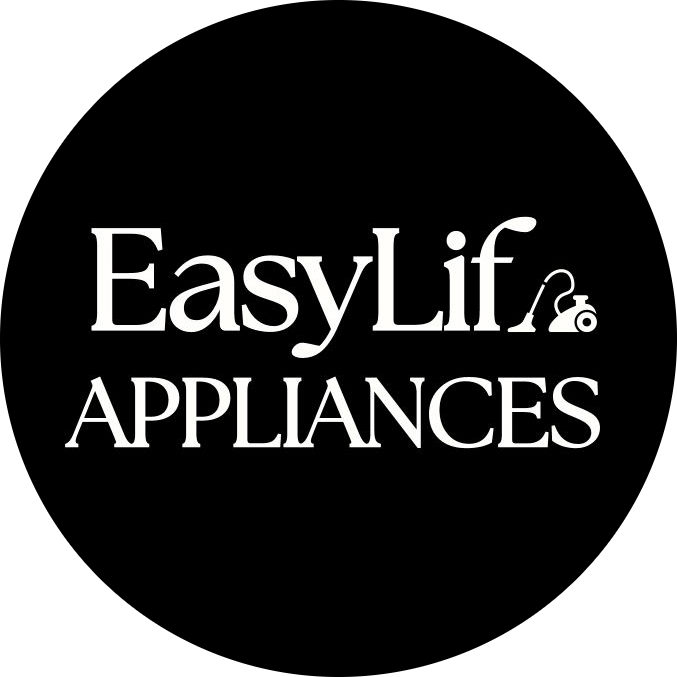
At our core, we’re a group of passionate households and gardening tools and appliances users and enthusiasts. We dive deep into the world of tech, especially when it’s about your household or gardening electric items. We try to provide as much value to the readers with our information and how to blog articles as possible. For affiliate articles our honest and transparent reviews of essential tech products are rooted in real-world experience. We take great satisfaction in offering unbiased evaluations, ensuring that you can make informed decisions when investing in your desired techs.

